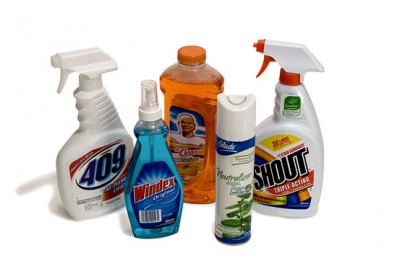We hear a lot about the misuse and overuse of antibiotics. The medical community has done well in informing both medical health professionals AND patients. We know that the misuse and overuse of antibiotics lead to drug resistance and newer drugs must be developed to keep up. But what about non-medical, everyday cleaning products? Like anti-bacterial soaps with triclosan and germ-killing household cleaners?
Though antibiotics are meant to treat whereas anti-bacterial products are meant to prevent infectious disease, the underlying concept is practically the same. They are all biocides and share similar traits. Including developing bacterial resistance. The concept is nothing new. Bacterial resistance is well observed and documented (see medical reference below) both in man-made biocides and in nature. At first, this may sound like an alarming issue. In the case of antibiotics, it is a cause for concern especially if antibiotics development can’t keep up and stay one step ahead. As for household disinfectants, there are no strong evidence that biocide resistance has escalated to a point of major health risk. That’s good news I guess, especially for the manufacturers of consumer household products. There aren’t sufficient data and the medical community can only speculate on the future. Some experts believe that the recent explosion of biocide containing household products could lead to highly resistant bacteria and therefore reduce the product’s effectiveness but more importantly, that this phenomenon could even directly or indirectly affect antibiotic resistance. On the other hand, other experts believe that the relatively low usage of such biocides in the real world as compared to a clinical setting is not enough to drastically disturb the microflora. Future speculations aside, most of the research do indicate that the regular use of antibacterial agents and disinfectants in a healthy household is unecessary and does not provide any additional health benefits. Not only that but overuse disturbs the balance within our immune system as I pointed out in Part I. Many of these products were not meant to be used on a regular basis. We all have times in our lives where our immune system is compromised. For me, it was the weeks after delivering my babies. Other than that, there hasn’t been any need for our family to use antibacterial products regularly. Just occasionally.
Our oversanitized environment and germaphobic society have led to the explosion in the number of germ fighting household products. But it is unclear whether consumers first demanded those products or manufacturers began making and aggressively marketing them. After all, the global household products market is a $70+ billion dollars industry and growing. It is also fast-paced with new ingredients and technologies and continuously changing regulations. The aggressive nature of the industry drives companies to constantly churn out new products and race to be the first in the market with a new and improved, latest and greatest germ-fighter without fully knowing the long-term health and environmental effects. The plethora of products has clouded our judgment and basic common sense.
Conclusion
Humans have co-existed and co-evolved with microbes since forever. And we will continue to do so either at nature’s pace or with the aid of man-made biocides. But if man-made biocides ever become a major problem, then most likely there can only be a man-made solution as nature will not be able to keep up with the altered and accelerated evolution of our microflora.
So what to do?
Let the medical community research and debate on the future consequences of abundant biocide use. Let the environmental groups and powers-that-be fight and persuade our government and its many overburdened agencies to regulate and do something about it. And let the manufacturers continue to make and market their unecessary germ-fighting household products in the absence of regulations. The most effective action we can take right now, as stewards of our healthy home, is conquer germophobia and reduce our use of antibacterial and disinfecting cleaners. The effects of your actions will ripple through the industry. So much of our house can be cleaned with simple solutions like vinegar, water, soap, surfactants, and baking soda. You don’t even have to exert a lot of effort – let your appliances do the hard work. I will elaborate on these simple cleaners in many posts to come. I just felt like it was important to give a little backgrounder as to why. For now, suffice it to say that regular use of commercial antibacterial products is overkill. Literally.
In the next section, I’ll discuss preservatives in our perishables, food and cosmetics. It’s all related!
Posts in this series on microbes: Part I, Part II, Part III, Part IV
References and further reading:
Aiello et al. Antibacterial cleaning products and drug resistance. Emerg Infect Dis. 2005 Oct;11(10):1565-70. View full-text.
Russell AD. Bacterial adaptation and resistance to antiseptics, disinfectants and preservatives is not a new phenomenon. J Hosp Infect. 2004 Jun;57(2):97-104. View online.
Aiello et al. Antibacterial cleaning and hygiene products as an emerging risk factor for antibiotic resistance in the community. Lancet Infect Dis. 2003 Aug;3(8):501-6. View abstract.
Tan et al. Use of Antimicrobial Agents in Consumer Products. Arch Dermatol. 2002;138:1082-1086. View abstract.
Levy SB. Antibacterial household products: cause for concern. Emerg Infect Dis. 2001;7(3 Suppl):512–5. View full-text.
International Scientific Forum on Home Hygiene. Recent publication listing on microbial resistance.
Athavaley A. Household Products Start to Come Clean on Ingredients. Wall Street Journal. April 2, 2009. View online.



